Are you unsure about the identity of a yellow flowering plant you found in your garden area? It’s possible that it’s a weed with yellow blossoms that has sprouted! Identifying yellow flowering weeds and substituting them with other plants that attract local pollinators are the goals of this article, which looks at a few of the most prevalent varieties.
1. Common Ragwort
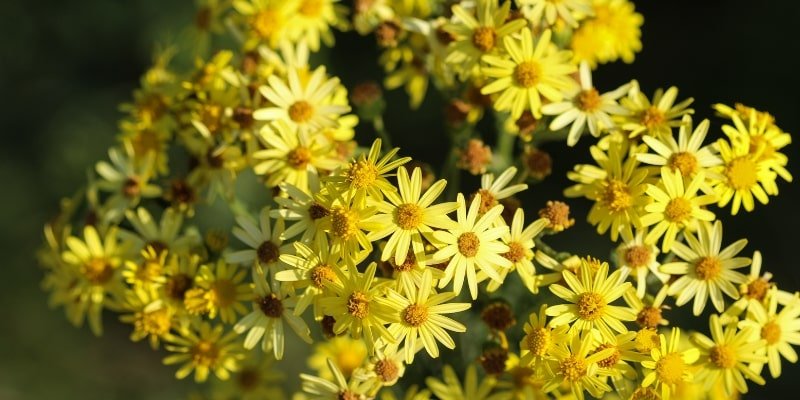
Scientific name: Senecio vulgaris
A member of the daisy family, common ragwort is an annual that can grow in the summer, spring, or fall. This weed is a nightmare for allergy sufferers because it can be toxic to natural herbivores. Because common ragwort spreads so easily, remove the blossoms before they become seeds. If not, a typical infestation of ragwort will happen quickly.
Common ragwort, however, does not disturb butterflies. This is one of the most popular flowering weeds for butterflies, so if you’re creating a butterfly garden, you might want to maintain it among your other plants.
2. Creeping Buttercup
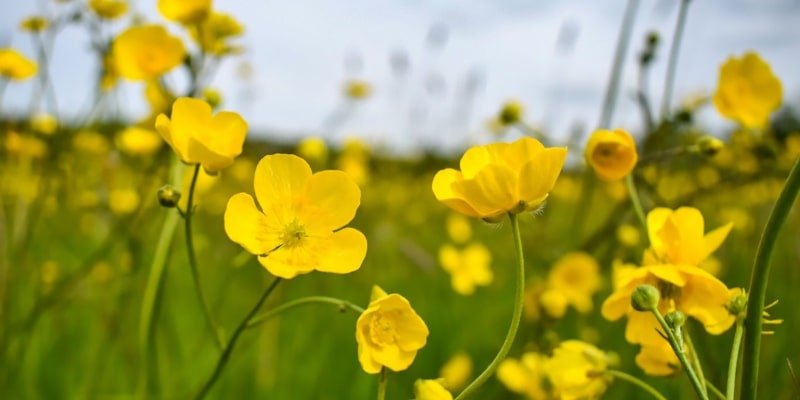
Scientific name: Ranunculus repens
The creeping buttercup is another widespread weed that has yellow blossoms. This plant grows slowly and sends fibrous roots down into moist soil. With five to seven petals and clusters of pistils and stamens in the centre, the flowers are a half-inch in diameter.
A well-drained, thick lawn will keep creeping buttercups from taking control. The grass will become resilient enough to combat this weed if it is kept mowed and fertilized. When needed, pulling it is likewise not too difficult.
3. California Burclover
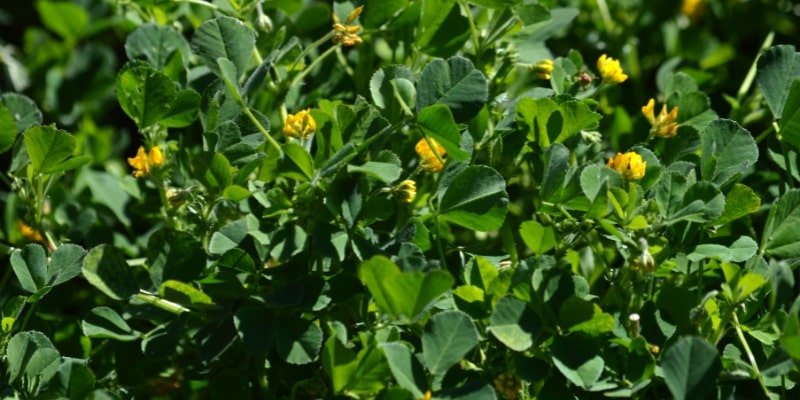
Scientific name: Medicago polymorpha
California burclover is a common annual weed in warm regions that grows slowly and produces yellow flowers. It is easy to recognize this weed by its sticky bursts, tiny yellow flowers, and trifoliate leaves. When these sharp seeds stick to clothes and fur, they become an annoyance because they help the plant spread.
Unchecked, California burclover can quickly take over lawns due to its rapid growth. When its stems take root in the soil at the nodes, they spread by spreading outward. Being a mat-forming weed, it upsets ecosystems by competing with desirable plants for essential supplies.
4. Marsh Yellowcress
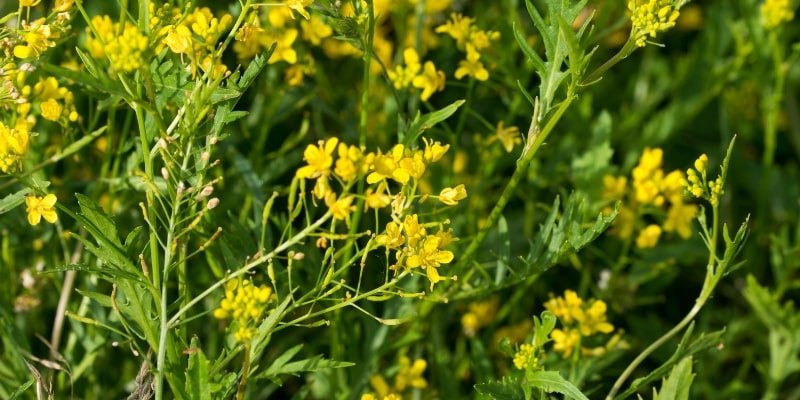
Scientific name: Rorippa palustris
Vegetable and nursery crops may experience issues from marsh yellowcress, which can appear as an annuals Flower, biennial, or short-lived perennial. Rich, fertile soil that is damp is ideal for this weed’s growth.
Marsh yellowcress may be the weed you have if it has toothed leaves and tiny blooms. Marsh yellowcress is simple to control because of its shallow roots; just pull the plant up by hand and dispose of the roots completely.
5. Wild Radish
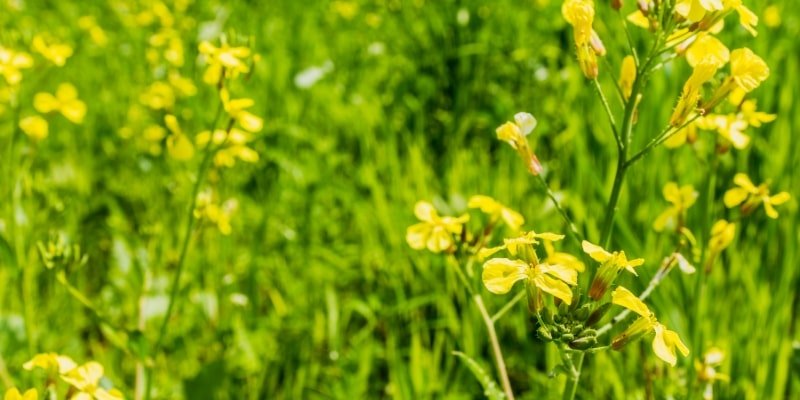
Scientific name: Raphanus raphanistrum
In spring and summer in the north, and in autumn and winter in warmer areas, wild radishes can be found in vegetable gardens. Vegetables will lose out to wild radish for soil nutrients, yet it flourishes in any kind of soil.
Having toothy leaves, wild radish bears pale yellow blossoms that fade to white. Manual pulling of wild radish makes management simple. Wild radish grows best in acidic soil; therefore, you can control its development by keeping your soil’s pH at 6.8.
6. Garden Loosestrife

Scientific name: Lysimachia vulgaris
Lysimachia vulgaris, sometimes known as garden loosestrife, is a tall perennial weed that blooms yellow. The yellow-flowering weed is identified by its clusters of cup-shaped, yellow, and orange flowers, elliptical to lance-shaped leaves, and upright stems that reach a height of 5 feet (1.5 meters). It blossoms all summer long.
After being brought to the US, golden loosestrife displaces native plants and eventually takes over expansive garden spaces. Furthermore, in contaminated areas, its tall, leafy stems shade out other plants and decrease biodiversity. Additionally, once established, the plant can be challenging to eradicate and spread quickly.
7. Yellow Salsify
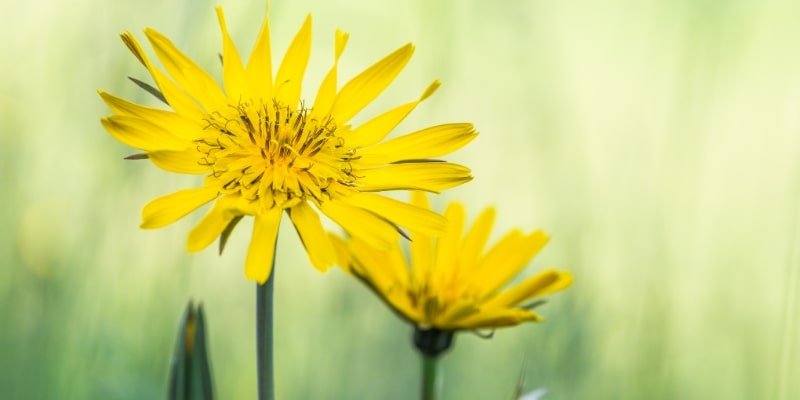
Scientific name: Tragopogon dubius
Yellow salsify is a short-lived broadleaf biennial or perennial that reaches heights of three feet and widths of up to two feet. Yellow salsify is a sun-loving plant, so keep an eye out for it in the sunny areas of your yard. It is sometimes called wild oyster plant because the roots and basal leaves are edible.
Mulch garden beds to stop yellow salsify from taking root. You can manually remove yellow salsify from lawns and garden beds. Yellow salsify shouldn’t be composted because its seeds will proliferate and take over wherever the compost is used.
8. Yellow Rocket
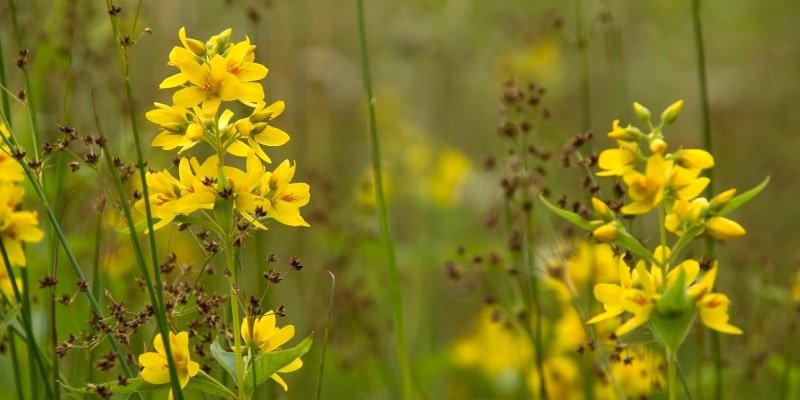
Scientific name: Narbarea vulgaris
The glossy, dark green leaves of this weed can grow up to eight inches long. Yellow rocket, sometimes referred to as a mustard flower, is a plant that thrives in farms and pastures as well as on turf grass and lawns. Belonging to the mustard family, yellow rocket features dense, deep green leaves and produces huge clusters of blooms in the spring.
Yellow rocket can be pulled by hand if the plants are tiny, as it can be an annoyance in yards and landscaping. If they are large, you will probably have to pull, mow, then pull some more, until they are removed gradually.
9. Yellow Lantana

Scientific name: Lantana camara
A low-maintenance bloomer, lantanas open their blossoms gradually throughout the growing season and, in the hottest regions, all year long. If you garden anywhere, lantana maintenance is simple. Grown with ease, lantana is evergreen even in areas where it is. Pruning lantana is the most crucial task, and it’s a simple one.
One amazing characteristic of lantana flowers is that several colours are often displayed on each blossom head, resulting in a kaleidoscope of colours. A spherical arrangement of many smaller blossoms, lantana flowers is 1 to 2 inches across. Hues of lavender, orange, red, rose, pink, gold, and white are among the various hues of this flower.
10. Canada Goldenrod

Scientific name: Solidago canadensis
Wild radish, a perennial weed with yellow flowers, has long, egg-shaped leaves with deep lobed tips. The flowers of the wild radish plant have four petals, a pale yellow colour, and a distinctive veining pattern. The weedy, uncultivated plant has a rounded, bushy shape and grows quickly by seed dissemination.
Growing up to 30″ (75 cm) tall, wild radish can be an annoyance in fields, gardens, and food plots. It can also out complete native plants for sunshine and nutrients because it is a competitive weed. It can also yield a lot of seeds, many of which will lie dormant in the ground for a few years before they sprout.
11. Bird’s Foot Trefoil

Scientific name: Lotus corniculatus
This perennial legume features whorled yellow flowers that can reach a height of three to five feet. This plant prefers soil that is somewhat acidic and receives a lot of moisture. Although bird’s foot trefoil can help curb erosion, it also has the ability to take over and push out other plants with its dense mats.
Cleaning footwear and equipment used for trekking in remote regions is one method to prevent bird’s foot trefoil from spreading throughout your yard. If bird’s foot trefoil does establish itself in your gardens and yard, you can manage it by frequently pulling it as soon as it is observed.
12. Cypress Spurge

Scientific name: Euphorbia cyparissias
Also referred to as Graveyard Weed, Bonaparte’s Crown, and Graveyard Moss, the cypress spurge is a bushy ground-covering plant that can reach a height of two feet. When humans come into contact with the sap of cypress spurge, it can irritate their skin and create rashes in grazing livestock.
Originating in Europe, the cypress spurge was brought to North America as a decorative plant. It grew to such an extent that the introduction of the European flea beetle to North America was necessary to curb the spread of the cypress spurge.
13. Yellow Nutsedge
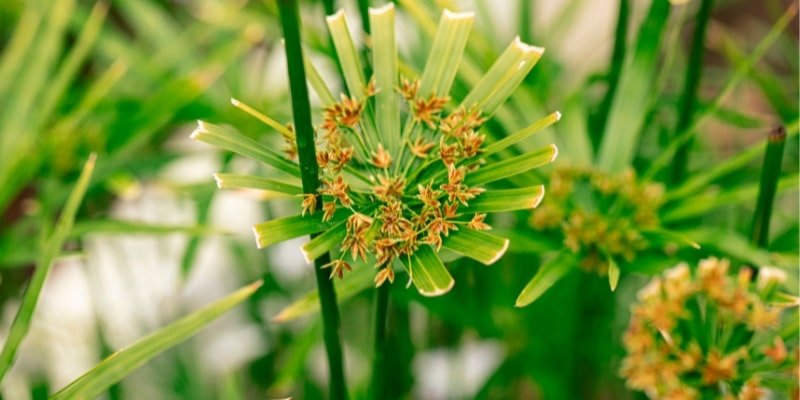
Scientific name: Cyperus esculentus
In lawns and garden beds, yellow nutsedge is a persistent and invasive perennial that forms grassy weed clumps. Slender grass-like leaves, spikes of vivid golden-yellow or straw-coloured flowers, and stems with a V-shaped cross-section are characteristics that distinguish this yellow-flowering plant. The little brown seeds that the noxious plant produces can survive in the soil for a number of years.
15 to 60 cm (0.5 to 2 feet) is how tall yellow nutsedge grows. Its robust underground tubers, which proliferate quickly to generate new plants, make it a challenging weed to eradicate. Because even tiny pieces left behind can regenerate, hand-removing or digging out the tubers is frequently futile.
14. Yellow Toadflax

Scientific name: Linaria Vulgaris
The pale yellow and orange flowers of yellow toadflax, a yellow-flowering plant, mimic the blooms of snapdragons. The perennial invasive weed spreads swiftly and chokes out other plants along its path.
It is distinguished by clusters of yellow flowers growing on tall spikes, narrow leaves, and tall, slender stems. Up to 2 feet (0.6 meters) in height, yellow toadflax can grow. Because yellow toadflax has the ability to outcompete native plants and disturb ecosystems, control measures are crucial.
The best method for getting rid of seedlings is by hand pulling. Sadly, the only substances that typically effectively destroy the root system are herbicides.
15. Skeletonweed
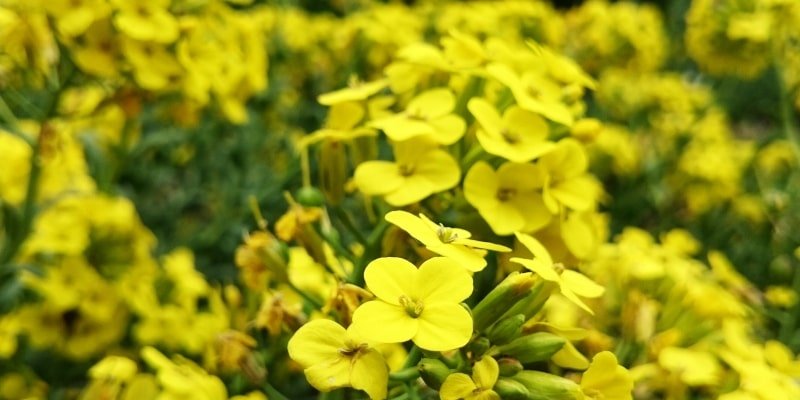
Scientific name: Chondrilla juncea
Skeletonweed is a biennial or perennial weed that spreads quickly, producing dense clusters of wiry stems and yellow blooms that resemble dandelions. The weedy plant spreads throughout fields, pastures, and disturbed places, reaching a height of up to 3 feet (1 meter). Harvests are impacted by this invasive weed’s competition with crops for water.
The unusual look of skeletonweed—tall, slender stems with tiny, insignificant leaves that give the plant a skeleton-like appearance—gives rise to its name. When the yellow flowers grow pappus, a fluffy seedhead like dandelion seeds, it spreads by seed.
16. Narrow-Leaf Plantain
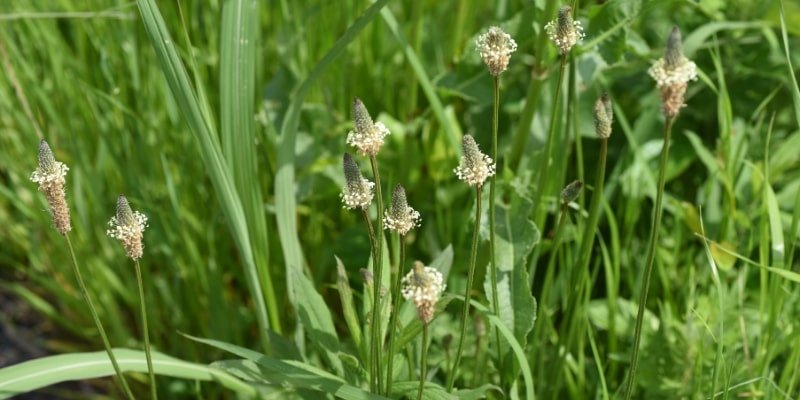
Scientific name: Plantago lanceolata
The narrow-leaf plantain is widely distributed and adapts to any kind of grass. This weed’s preference for dry, compacted soil and alkaline environments suggests that there may be a compaction issue with the soil if it is present. While narrow-leaf plantain can be an eyesore in flower beds and on lawns, it is less of an annoyance on pastureland.
Narrow-leaf plantains can be hand-weeded out, but be careful to get rid of all the roots, or they will come back. Herbicide application will be necessary for larger infestations.
17. Wild Parsnip
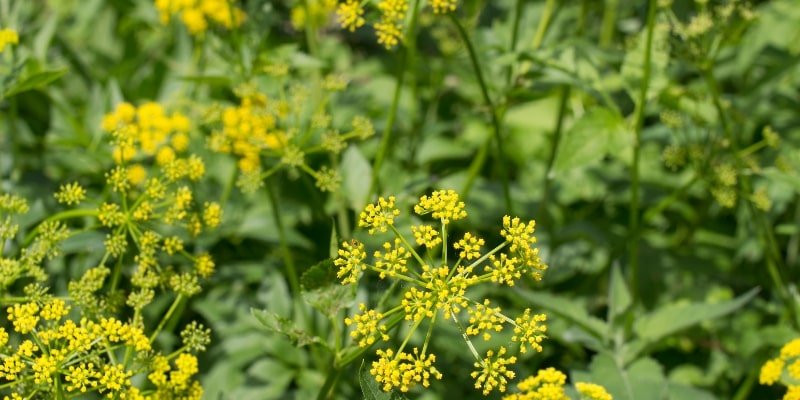
Scientific name: Pastinaca sativa
This invasive herbaceous weed can grow in both moist and dry soil, and it can tolerate a wide range of environmental factors. Not just other plants are harmed by this invading plant. It may potentially pose a risk to human health. Avoid coming into contact with wild parsnip since it can lead to chemical burns on the skin, resulting in blisters, rashes, and discoloration.
It is crucial to know what wild parsnip looks like because symptoms from touching it can last for up to two years. Three to five of its toothy, yellow-green leaves are arranged in groups off the primary stem. Tiny yellow flowers are arranged in groups atop its stalks.
18. St John’s Wort

Scientific name: Hypericum perforatum
The perennial weed St. John’s Wort has yellow blossoms and can be aggressive and challenging to eradicate. This yellow-flowering plant, which grows up to 0.78″ (2 cm) across, is covered in golden-yellow, star-shaped, five-pedaled blooms that are described as noxious weeds. Usually linear or extended oval in shape, its leaves include translucent glands.
This perennial plant is every bit the weed that annoys people. Its deep root system, ability to spread quickly, ability to flourish in most settings, and ability to form dense mats that outcompete native plants have an influence on biodiversity. Through seeds and its resilient root system, St. John’s Wort spreads.
19. Grass-Leaved Goldenrod

Scientific name: Euthamia graminifolia
Native to the area, grass-leaved goldenrod is a thick cluster of little yellow blooms. The yellow-flowering plant, which is native to North America, has long, branched stems with narrow, grass-like leaves and clusters of yellow flowers with flat tops.
The perennial weedy plant blooms in late summer and autumn and reaches a height of 3 to 6 feet (1.8 meters). Goldenrod with grass leaves may help attract pollinators such as bees, butterflies, and other insects.
The weedy behaviour of goldenrod is caused by its robust rhizomatous roots, which proliferate and create colonies. On the other hand, well-managed yellow-flowering plants can be used in coastal gardens, butterfly gardens, and border plantings.
20. Yellow Hawkweed
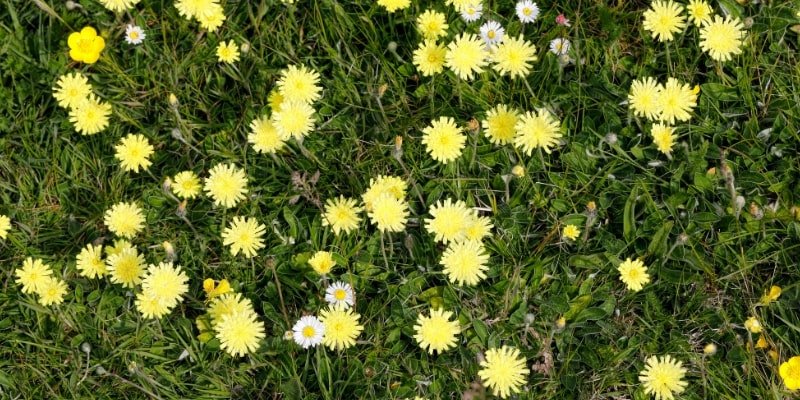
Scientific name: Hieracium caespitosum
Everyday-looking yellow blossoms adorn the perennial wildflower known as yellow hawkweed. The lobed leaves forming a basal rosette and the starry flowers atop long, tubular stalks serve as distinguishing characteristics of this weedy plant. The yellow weed reaches a height of one foot (0.3 m).
Yellow hawkweed suppresses attractive grass species and forms dense patches through its creeping roots and seeds. Because yellow hawkweed can recover from small root fragments and has a deep taproot, controlling it can be difficult.
Eliminating the plant in the spring might be aided by pulling weeds. Mowing lawns, however, usually encourages flowering.
21. Yellow Sorrel
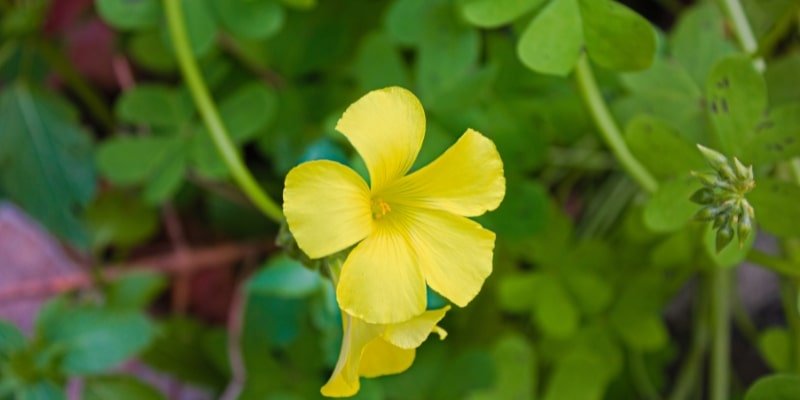
Scientific name: Oxalis stricta
The yellow sorrel has a maximum height of 20 inches. The leaves of this yellow-flowering plant are light green in colour. It produces tiny, cup-shaped blooms. Autumn and summer provide blossoms for yellow sorrel. Their foliage has a heart-shaped form.
You can use mulch to stop yellow sorrel and other weeds from establishing roots in your garden beds. In the spring or autumn, yellow sorrel can be manually removed or treated with a broadleaf herbicide.
You can get rid of yellow sorrel by pulling it frequently and mowing over it if it is taking over warm-season turf like St. Augustine or Bermuda grass or cool-season turf like Kentucky bluegrass or tall fescue. It should not take long to stop it from coming back.
22. Lesser Celandine
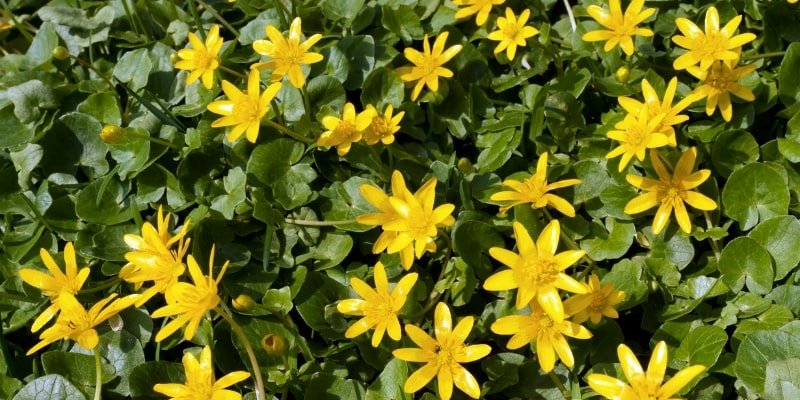
Scientific name: Ficaria Verna
Lesser celandine is a ubiquitous plant in gardens, lawns, and wooded areas that spreads quickly on its yellow blossoms. In addition to being self-pollinating, lesser celandine can reproduce through its root system.
It could be challenging to get rid of less celandine. You can dig up the plants to get rid of small infestations. Once the leaves have fully grown but before flowering, larger patches of lesser celandine will require mowing.
23. Dandelion

Scientific name: Taraxacum
A perennial weed with thick roots, dandelions bloom from March to November. As the seeds are blown from a spent dandelion blossom, they proliferate. Before sending dandelion seeds to the four winds, kids frequently make wishes.
Young dandelion leaves are used as an addition to green salads and drinks because of their health advantages. More beneficial than the usual weed, dandelion blooms can be used to make wine. Dandelions will still push out the grass, though.
Having dense grass is your best line of defence against broadleaf weeds like dandelions. Because dandelions have lengthy roots, hand-weeding is not an effective method of control. Once they have begun to reproduce in their garden, it may take some time to get rid of them. Many merely let them grow, cutting their lawn on a regular basis.
24. Creeping Cinquefoil

Scientific name: Potentilla reptans
One of the most prevalent weeds is creeping cinquefoil, which appears on neglected lawns. Small flowers adorn the leaves of the creeping cinquefoil, which have segmented, jagged edges. After settling onto your lawn, creeping cinquefoil spreads quickly thanks to its creeping stems that take root.
If left unchecked, this invasive weed can grow into a monoculture. It looks bad on flower beds and lawns as well.
Raking is a more effective way to weaken creeping foliage than hand-weeding. When dealing with a severe infestation of creeping cinquefoil, weed killer works well. After around six weeks, you’ll need to use weed killer to prevent regret. June to October is when creeping cinquefoil blooms.
25. Common Evening Primrose
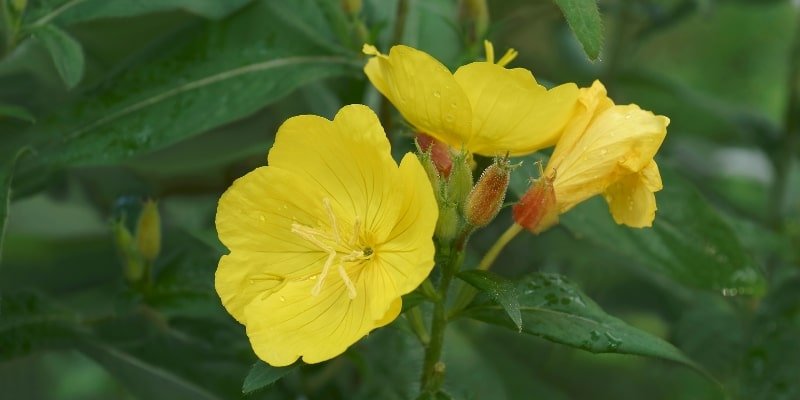
Scientific name: Oenothera biennis
Common evening Primrose Plant is a weed that is prized as a wildflower. Fields and forest areas are home to the common evening primrose, with its trumpet-shaped flowers that open in the evening. Hummingbirds devour its nectar.
Common evening primrose is a weed that may grow up to six feet tall, and while some people would even buy seeds for it, not everyone is interested in growing it. Pulling on the root should make it quite easy to remove.
26. Purslane

Scientific name: Portulaca oleracea
A low-growing annual weed that can overrun gardens and lawns is purslane. The tiny yellow flowers on this quickly growing weed have heart-shaped petals and resemble little cups.
It has crimson stalks bearing succulent paddle-shaped leaves. Purslane can reach heights of up to 3″ (7.5 cm) and widths of up to 18″ (45 cm). Purslane has certain uses, even though it’s considered a weed.
Its edible leaves make it a good ground cover in full sun. It is invasive nonetheless, due to its quick growth, strong resistance to dryness and poor soil, and capacity to suffocate desirable species in dense, thick mats.
27. Common Groundsel

Scientific name: Senecio vulgaris
Common groundsel, or Senecio vulgaris, is a weedy plant that has open clusters of yellow blooms that resemble cylinders. The distinctive feature of this annual herbaceous weed is its long, lobed leaves that grow upright on stems. Little yellow blooms grow from the top of these, and the base is encircled by green bracts with black tips.
Groundsel has a height range of 0.4 to 0.6 meters (1.3 to 2 feet). As the flowers get older, they turn into white puffballs that resemble dandelion leaves. With slight breezes, these fluffy, light seeds can travel great distances with ease. Rapid self-assembly allows the weed to outcompete desirable plants for nutrients and sunshine.
Common groundsel is classified as a noxious weed that is harmful to both humans and livestock, even though it is endemic to North America.
28. Common Sowthistle
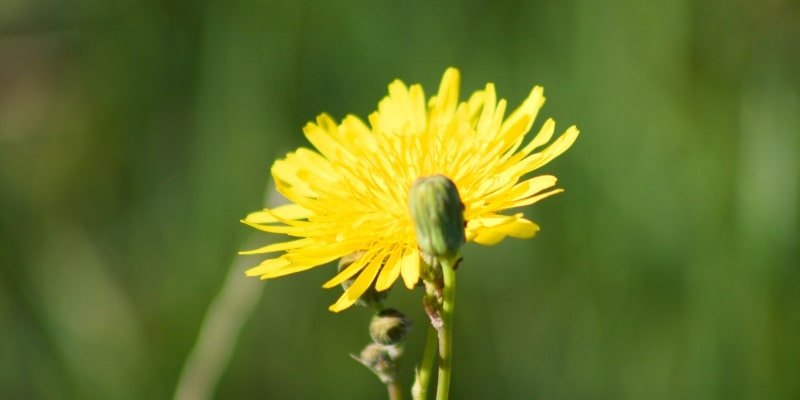
Scientific name: Sonchus oleraceus
Typical A tall annual weed that blooms in the spring, sowthistle has tiny, vividly coloured yellow blossoms that resemble little dandelions. In warm weather, the upright weed can grow 3 to 4 feet (1 to 1.2 meters) tall very quickly.
The weedy plant can be recognized by its deep-looped leaves, vivid yellow starry flowers, and ability to grow in most types of soil. Its many fluffy seeds, scattered by the breeze, facilitate easy reseeding.
Similar to other yellow weeds, it can be avoided by routinely cutting your lawn and keeping your soil healthy. It can also be successful to remove the weed by hand, including its taproot, by digging it up. When bare land is covered with mulch, weeds can be kept from sprouting.
29. Capeweed
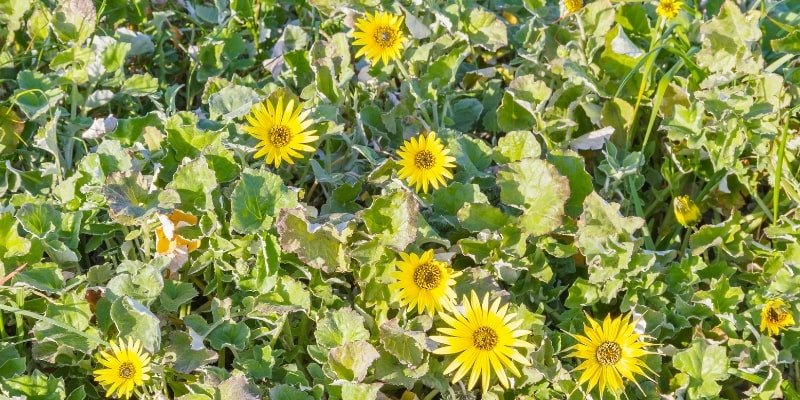
Scientific name: Arctotheca calendula
The captivating ray blooms of the evergreen perennial capeweed plant are made up of yellow petals encircling a black core. The basal rosette of silvery-green leaves gives rise to hairy stalks bearing yellow daisy-like blooms. Like many yellow-flowering weeds, the leaves are elongated and have strongly lobed borders. This little yellow weed is about 12″ (30 cm) tall.
Lawns can be kept free of capeweed by routinely cutting the grass and keeping it healthy. Healthy, thick grass hinders capeweed’s ability to spread. To stop the yellow weed from spreading and kill it, cover it in other areas with cardboard or weed mats.
30. Spanish Broom

Scientific name: Spartium junceum
The perennial shrub known as Spanish broom has yellow flowers and has a tendency to spread rapidly. Long, thin green stems that grow between 10 and 16 feet (3 and 5 meters) tall are indicative of this plant. Blooming at the ends of stalks in summer and autumn, the bright yellow flowers have unevenly shaped petals that are 1″ (2.5 cm) in length.
The Spanish broom is an invasive yellow weed that spreads quickly, pushing away native plants and upsetting ecosystems. It reproduces readily and spreads by seed. Thus, removing the seed pods and excavating the root can aid in halting its spread.
Conclusion
A person’s weed may be another person’s wildflower. While certain yellow-flowering weeds are acceptable in yards and gardens, in other places they are still regarded as weeds.
In addition, there are a lot of weeds with yellow flowers that are bothersome and difficult to get rid of. However, touching certain of them might result in blisters, blistering, and skin discomfort. Additionally toxic to animals are these plants.
It is simpler to stop invasive, bothersome, or dangerous weeds from spreading than to eradicate them afterwards. After camping or trekking in forested regions, clean your boots and equipment, and remember not to compost weeds you’ve gathered from your vegetable garden and flower beds.

